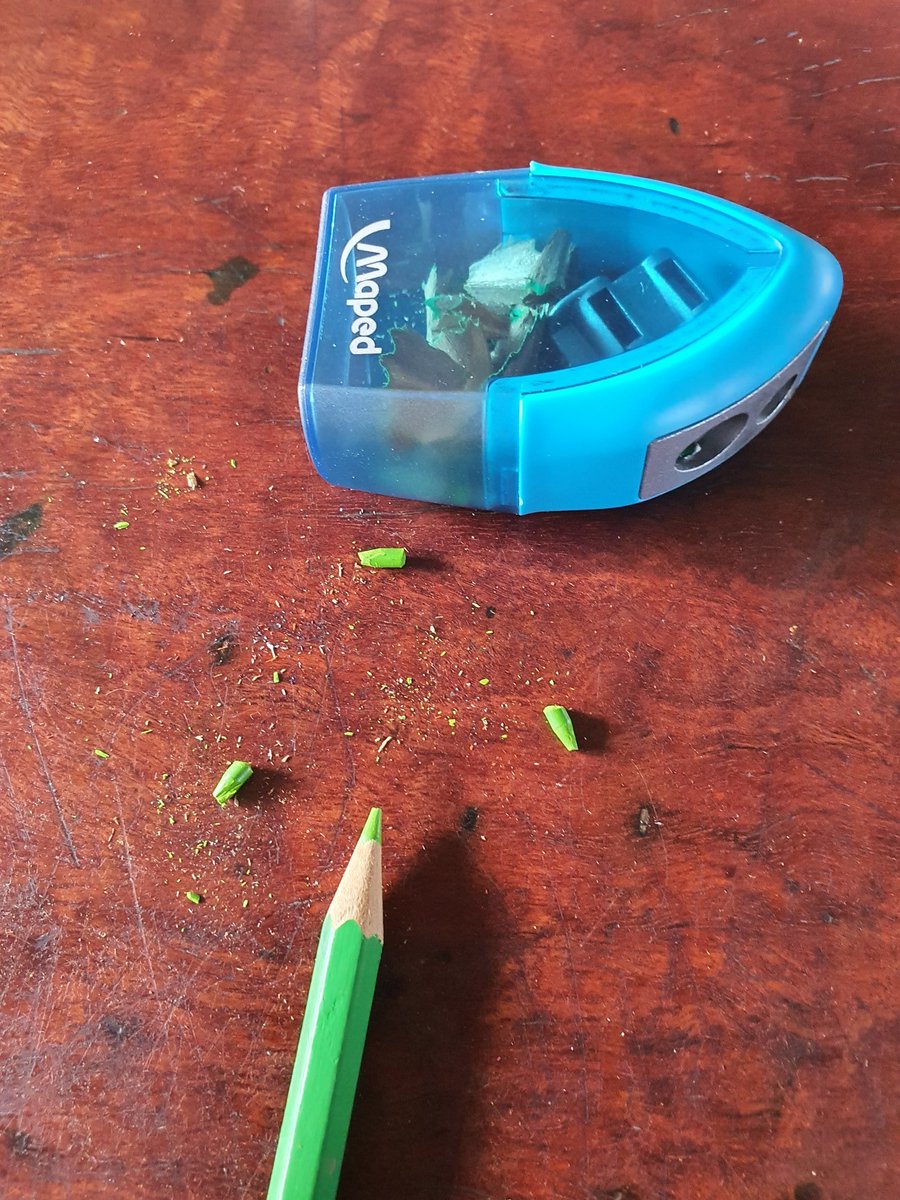I& #39;ve spent a lot of time thinking about pencil sharpening theory lately, it& #39;s very similar to a lot of machining theory. Chip formation and rejection in particular. Mostly, I& #39;m thinking about why this happens
I used to think that it was because the lead was broken inside the wood and as one sharpened the pencil the lead got exposed and the next bit broke off. I no longer think this, it& #39;s too regular! There& #39;s no way every pencil breaks at regular intervals inside the wood.
I now think that the problem is caused by hand sharpening pencils and I& #39;ve become convinced that rotary sharpeners are loads better.
When hand sharpening you turn then stop, turn then stop. This is the difference between static and dynamic friction and causes higher torque
When hand sharpening you turn then stop, turn then stop. This is the difference between static and dynamic friction and causes higher torque
When actually turning, it& #39;s dynamic friction regime, which means lower torque and better cutting. So the lead experiences less rotational stress *while it& #39;s turning*. Then once you stop the blade is engaged along it& #39;s full length and it& #39;s static friction time.
So at the point of restarting the twist the friction is highest and the torque on the lead is highest, then snap. This is why I was getting such good results using the drill in the sharpener. It never stops, it& #39;s always moving, shaving to a perfect point.
I& #39;ll keep posting about this important topic as more data emerges.

 Read on Twitter
Read on Twitter


